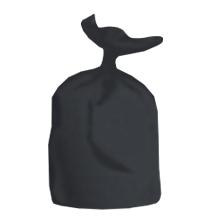Walking and cycling are great ways to contribute to an active lifestyle and come with the additional benefits of reducing motoring costs, pollution and traffic congestion.
A walking and cycling app has been developed to help navigate around the islands' quiet lanes. For more information, search "Walking, Cycling Guernsey" on your favourite app store.
More information about walking and cycling in Guernsey can be found in the dropdowns below.
Top tips for enjoyable cycling
- If you are new or returning to cycling it may be useful to have a look through the Highway Code as you can pick up some really useful information about cycling.
- Tyres: Check your tyres air pressure every couple of weeks as tyres lose a little air each day on their own. Very often you can see that a tyre looks soft when sitting on the bike, if you can squeeze the tyre then the air pressure is probably too low.
- Brakes: Most brake pads have grooves in the rubber friction material (the bit that touches the wheel rim), when the grooves have almost disappeared then it is probably time to replace your brake pads. You can usually adjust your brakes by turning the adjuster at the handlebar brake lever. It is worth keeping your wheel rims and brake pads clean (especially in winter) as the build-up of dirt on the rims and brake pads can cause them to wear out quickly. Detergent (washing liquid) and warm water does a good job of cleaning the rims and brakes.
- Chain: Make sure your chain is not dried out or rusty, as this can lead to premature wear of the chain and the gears. If the chain is dry, lubricate it by using a greaseless chain lubricant, but don't apply too much as that will cause road dirt to stick to the chain and gears. Once you have lubricated the chain use an old newspaper to rub over the chain to remove excess lubricant. If you find stiff links in your chain, you may be able to free them by carefully and slightly bending the chain sideways back and forth with some lubricant until the stiff link loosens up.
- Wheels: The majority of bikes are fitted with quick release wheels so it is important that you check the quick release wheel handles are tight.
- Helmets: It is strongly recommended that you wear a cycle helmet at all times. For more information on the fit and types of cycle helmets please speak to a local cycle retailer. Make sure you fit and adjust your helmet correctly so that it fits snugly and the straps and slides are properly adjusted. As a guide you should just be able to get two fingers between the chin strap and under your chin.
- Riding in traffic: When riding in Guernsey:
- it is compulsory to ride on the left side of the road;
- it is best to ride at least 3 feet from the edge of the pavement/road;
- it is best to ride at least 4 feet from a parked car;
- it is recommended that you follow the 'Rule of Thirds'.
- Whether you communicate by using hand signals, your voice, a horn or bell, or even polite hand gestures, will help make yourself and your intentions known when out on the roads.
- The rule of thirds: Use your position on the road to show others where you are going. When you approach an intersection, there are three choices: a right turn, a straight path of travel, or a left turn. By being in the correct position on the road, you make yourself more visible to others and can communicate what you are doing and where you are going by using hand signals.
- Riding at night: Visibility should be your first concern at night not only so you can see where you are going, but so that others can see you.
- In law you are required to have front and rear lights lit. Your cycle must also be fitted with a red reflector (and amber pedal reflectors if manufactured after 1/10/85). White front reflectors and spoke reflectors will also help you be seen. Flashing lights are not permitted.
- Wearing reflective and light coloured clothing is also very useful in making yourself visible to others at night as is positioning on the road. This is an essential way in which you can help make yourself visible at night, ride where drivers expect you to ride so you can be more visible.
- Riding in rain and fog: Slow down and give yourself and other road users more space. Using your lights is another good way of being seen in wet conditions.
- It is also a good idea to start braking earlier, and use brakes more gradually than you would when it is dry. Ride around puddles where you can in case there is a pothole below, and be on the lookout for slippery manhole covers and lines that are painted on the roads.
- Filters: At a junction that is controlled by 'Filter in Turn' signs, all directions have equal priority so give way in turn to vehicles which also intend to enter the junction.
- General tips
- The rules of the road apply the same to cyclists as they do motorists;
- Only ride where you know it is legal, roads that are closed are closed to protect cyclists as well as motorists;
- Remember it is against the law to ride more than two abreast;
- Watch your speed when going downhill;
- Be prepared to meet traffic and be alert in the lanes;
- Be considerate to walkers and horse riders;
- There are lots of gateways that cross footpaths so you never know what may be coming out of a driveway, it is against the law to ride on the footpath;
- Take care when crossing main roads;
- Make sure you stop at yellow lines, and at give way signs;
- Wear brightly coloured clothing to help make you more visible;
- Wear a cycle helmet to help protect you in the event of an accident;
- Pedestrians have priority over cyclists, so when in shared spaces such as the cycle paths, expect to see and give way to pedestrians.
- Take care when crossing main roads;
- Make sure you stop at yellow lines, and at give way signs;
- Wear brightly coloured clothing to help make you more visible;
- Wear a cycle helmet to help protect you in the event of an accident;
- Pedestrians have priority over cyclists, so when in shared spaces such as the cycle paths, expect to see and give way to pedestrians.
- Locations of Cycle Stands & Shelters
- There are a number of cycle stands and shelters around the island, the locations of these can be found in the downloads section of this page.
- An app is also available to download free for Android and Apple devices. The app will help with navigating around the Ruettes Tranquilles network (see below) and also shows the various cycle tours routes across the island, the locations of the main cycle hoops and the local cycle dealers. There are no roaming charges when using the app, just make sure "Location" is enabled on your device so the app knows where you on the routes, you may also need to refresh the "Location" icon on your device periodically so your location is updated on the map.
Ruettes Tranquilles
- If you would like to enjoy cycling (or walking) in quiet lanes, there are designated lanes across the island with a recommended speed limit of 15 mph. These are called 'Ruettes Tranquilles' and are open to all traffic though priority is given to cyclists, walkers and horse-riders. Together they form a rural route across the parishes of: Vale, Castel, Forest, St Andrew, St Martin, St Sampson, St Saviour. Each entry point to a Ruettes Tranquilles is signposted. An information leaflet giving additional information on Ruettes Tranquilles, along with the Ruettes Tranquilles network, can be found in the downloads section of this page. Living Streets Guernsey has created two walking routes: St Martin to St Peter Port and St Peter Port South to Town. These can also be found in the downloads section.
Living Streets & Walking Routes
- Living Streets Guernsey have put together some scenic walking routes which are also great for cycling. If you would like to try one of the routes, please check the route maps in the downloads section of this page.
Cycle Paths
- A foot and cycle path runs along the eastern sea front from Bulwer Avenue to the Weighbridge roundabout in Town. Courtesy and awareness of others is required by everyone using this shared space, particularly in more narrow sections of the path. A cycle Contraflow exists through Les Effards and Baubigny which links onto Vale road, which is then just a short ride to join onto the eastern sea front cycle path.
- In addition, there are cycle paths along the north and west coasts which provide access to the island's coastline for cyclists, walkers, pushchair and wheelchair users. A recommended 10 mph speed limit applies to coastal paths, and those cycling are reminded to be aware and courteous to other users of the path. Cycling is not permitted on the islands' nature trails or the cliff paths between La Vallette Bathing Pools and Pleinmont Point.
Electric Cycles
- Electric cycles are now very common; the latest models have ranges of around 100km depending on use. They allow the benefit of physical activity while also providing assistance when needed to ride uphill or into a headwind. Electric cycles can be charged quickly using a normal electrical socket, many cycles have a removable battery so you can easily take the battery with you to charge at work or home. Charging can take as little as three hours on the modern generation of cycles.
- For more information on all cycles please contact one of the local cycle retailers:
- The law relating to electric cycles can be viewed online.
E-Trike & E-Cargo Bike Subsidy
- Following the success of the e-bike subsidy in 2018 which increased rates of active travel and reduced transport related emissions, another electric bike subsidy was launched on Saturday 4th April 2020. This initiative focused on e-trikes and e-cargo bikes, both of which can play a useful role in improving mobility choices. Islanders were offered a discount on e-trikes up to the purchase value of £2,000 and e-cargo bikes up to the purchase value of £3,500.
- E-trikes are even more accessible than standard e-bikes, offering comfort and stability for people who may have mobility, strength or balance issues. E-trikes can give people who might struggle to ride a two wheeled bike the opportunity to cycle confidently; others might simply benefit from their ease to ride or their typically generous load carrying capacity.
- More information on the process to access an e-trike or e-cargo bike can be found though the participating cycle retailers:
- Please note, this subsidy initiative has now finished.
Cycle Groups & Tours
- There are a number of social cycling groups that welcome cyclists of all abilities to their ride outs and social events:
- The VisitGuernsey website contains more information about cycle tours which are available during the main visitor season and about cycle hire.













